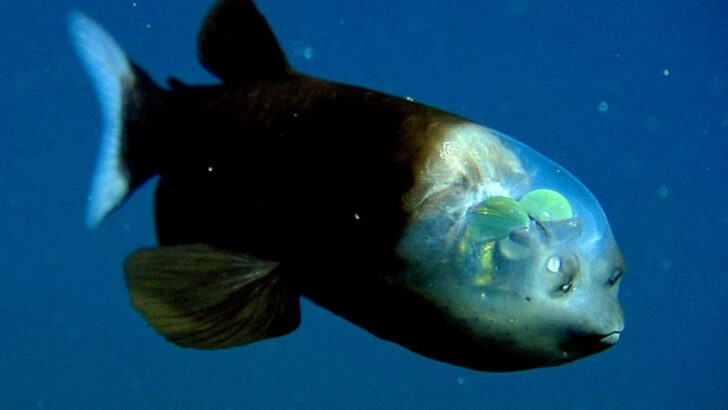The ocean didn’t get the memo about being explored. Just when we think we’ve seen it all, Earth’s deep blue vault cracks open and drops another jaw-dropping surprise—or 13 of them. From fish with transparent heads to squishy aliens that look like they were designed by a bored sci-fi artist, the ocean floor is still serving up the weirdest, wildest life-forms known (or unknown) to science. And these aren’t relics from ancient legends—these creatures were just discovered. So buckle up your diving suit (or just your imagination) and get ready to meet the newest cast members of nature’s strangest reality show. These deep-sea oddballs are real, recent, and ridiculously fascinating.
Bioluminescent Octopus

Gliding through the unfathomable depths of the ocean, the bioluminescent octopus illuminates its surroundings with an ethereal glow. Imagine a world where darkness is punctuated by the soft, bluish light emitted by this enchanting creature. Its unique ability to produce light not only fascinates but also serves as a tool for communication and camouflage. In one moment, it appears as a ghostly figure; in the next, it vanishes into the abyss. These octopuses represent nature’s ingenuity, adapting to the deep-sea’s challenges with elegance and mystery. Such bioluminescence adds a mystical element to our understanding of ocean life.
Glass Sponge
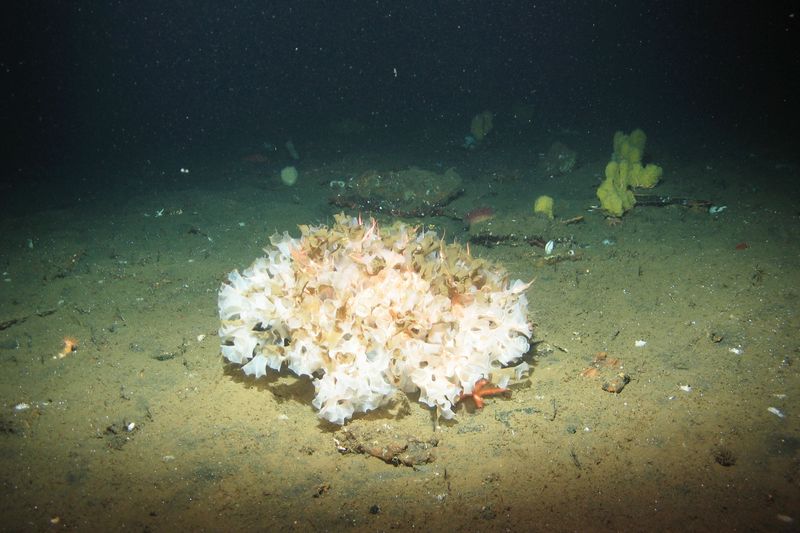
In the quiet solitude of the ocean floor, the glass sponge stands as a testament to the beauty of simplicity. Its intricate, lattice-like structure resembles delicate glasswork, a masterpiece crafted by nature itself. These sponges are ancient beings, thriving in some of the ocean’s darkest corners. Despite their fragile appearance, they play a vital role in filtering water and providing habitats for marine life. Their existence challenges our perceptions of resilience and adaptation. The glass sponge’s serene presence and utility remind us of the interconnectedness of ocean ecosystems and the life they support.
Deep-Sea Dragonfish
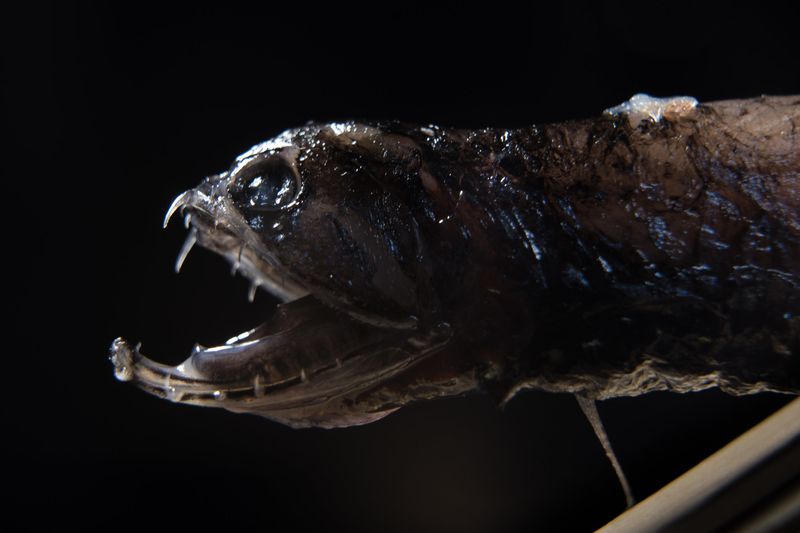
With a menacing appearance that rivals mythical creatures, the deep-sea dragonfish is a master of the abyss. This fish’s sharp teeth and bioluminescent spots create a terrifying yet captivating visage. It uses its glow to attract prey, luring them into the depths where escape is impossible. Its adaptations to the dark waters showcase survival at its most extreme. With a body designed to withstand crushing pressures, the dragonfish embodies the relentless push for survival in an unforgiving world. Its existence in the deep challenges our understanding of life’s boundaries and possibilities.
Giant Siphonophore
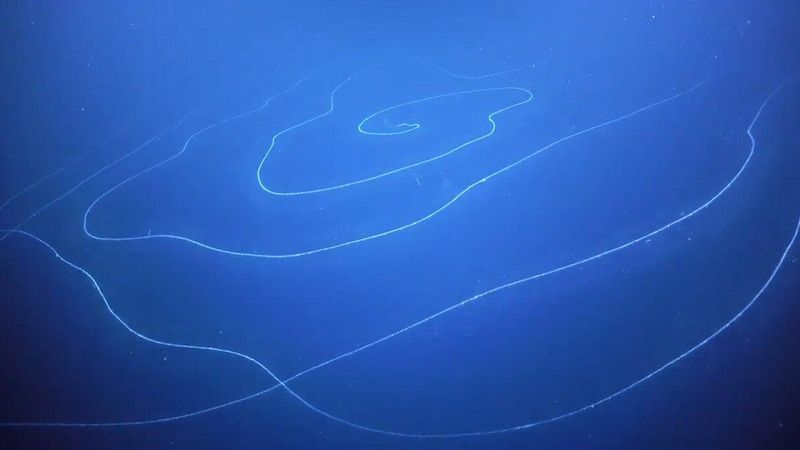
Stretching out like an endless ribbon, the giant siphonophore defies traditional notions of individual organisms. This colonial creature consists of numerous specialized segments working in harmony. Each contributes to its survival, from capturing food to reproduction. Its iridescent colors dance through the water, creating a mesmerizing spectacle in the ocean’s depths. Despite its beauty, the siphonophore is a formidable predator, using its vast length to ensnare prey. It exemplifies the diversity and complexity of life forms that thrive far from the sun’s reach, showcasing the intricacies of teamwork in nature’s design.
Vampire Squid
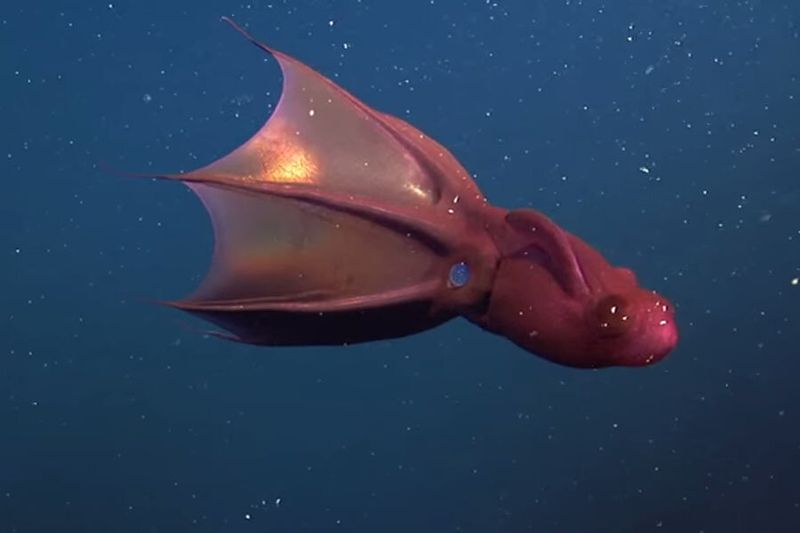
Shrouded in the mysteries of the deep, the vampire squid enchants with its dramatic appearance. Its cape-like webbing and red hue create an image reminiscent of legendary vampires. This creature’s ability to invert its arms and reveal spikes serves as both a defense mechanism and a display of nature’s creativity. The vampire squid’s preference for oxygen-poor waters sets it apart, thriving where others cannot. Its unique adaptations and survival strategies highlight the ocean’s vast and varied life forms. With an appearance both eerie and beautiful, it captivates all who dare explore its world.
Barreleye Fish
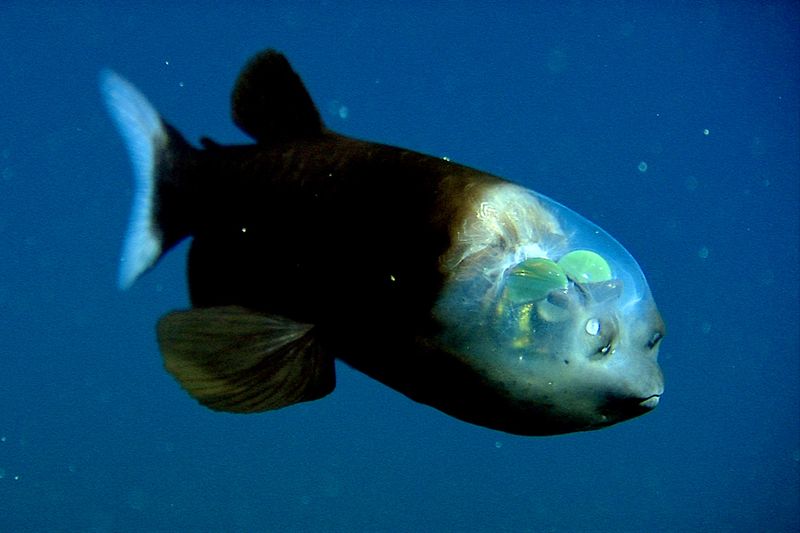
Peering through the ocean’s twilight zone, the barreleye fish offers a glimpse into the marvels of deep-sea evolution. Its transparent head houses upward-facing eyes, allowing it to spot prey silhouetted against faint light. This adaptation is crucial for survival in its mid-water habitat. A creature of curiosity, the barreleye fish invites us to ponder the possibilities of nature’s engineering. Its eyes, capable of rotating within a fluid-filled dome, exemplify the precision with which life adapts to its environment. Such innovation serves as a reminder of the ocean’s boundless creativity and wonder.
Yeti Crab

Dwelling near the fiery realms of hydrothermal vents, the yeti crab is as intriguing as its namesake. Covered in hair-like setae, this pale, enigmatic creature thrives in the extremes of the ocean’s depths. Its distinctive pincers are not just for show; they harbor bacteria that the crab farms for nourishment. This symbiotic relationship reveals a fascinating aspect of deep-sea life, where survival strategies often rely on cooperation. The yeti crab exemplifies nature’s adaptability, thriving in the heat and darkness, reminding us of the wonders hidden in the ocean’s uncharted territories.
Japanese Spider Crab
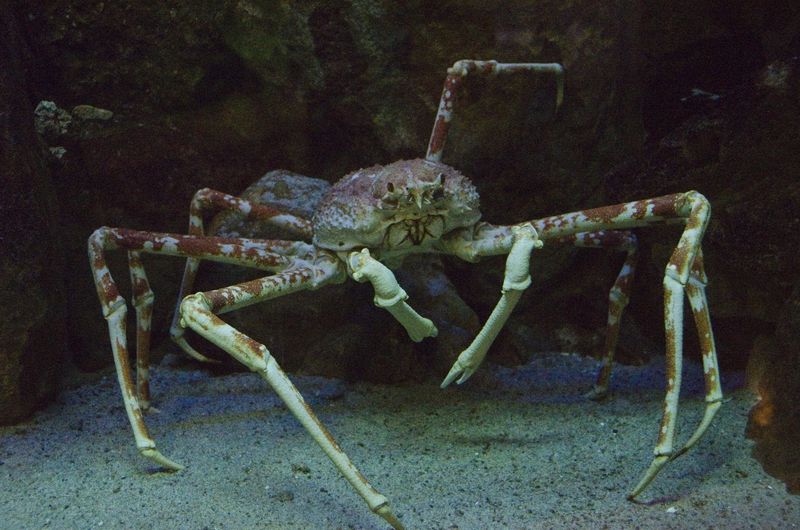
Beneath the waves, the Japanese spider crab reigns as a titan of the sea floor. With legs extending over twelve feet, it boasts the largest leg span of any arthropod. This gentle giant, despite its intimidating appearance, is a scavenger, feeding on detritus. Its long legs, while seemingly cumbersome, allow it to traverse the ocean floor with surprising grace. The spider crab’s existence challenges our perceptions of scale and adaptation, showcasing the ocean’s ability to foster life in diverse forms. Its presence in the deep is a testament to the vastness of marine biodiversity.
Dumbo Octopus

In the dim, distant reaches of the ocean, the Dumbo octopus flutters gracefully with its ear-like fins. These adorable appendages, reminiscent of the beloved Disney character, have earned this creature its whimsical name. Though small, the Dumbo octopus is a master of its environment, using its fins for propulsion as it searches for food. It embodies the charm and adaptability of deep-sea life, surviving in harsh conditions with elegance. The Dumbo octopus is a reminder of the playful and diverse forms life can take, far removed from sunlight yet thriving in its own right.
Fangtooth Fish
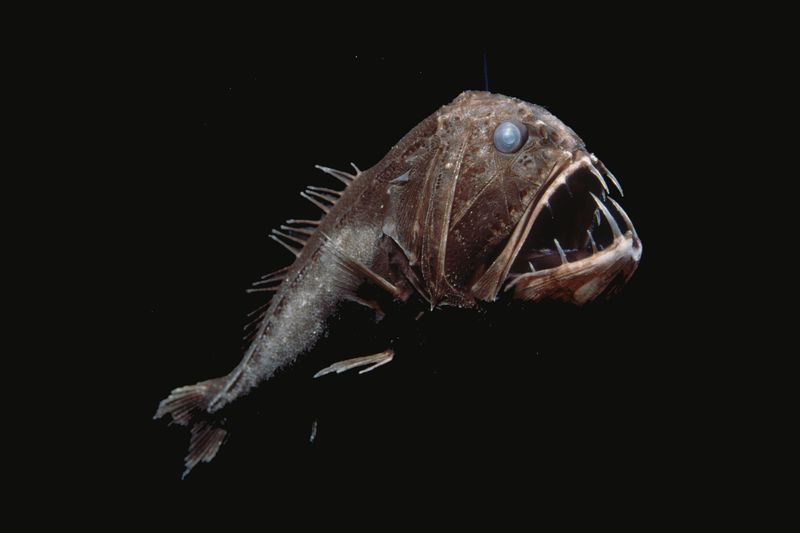
Lurking in the ocean’s inky depths, the fangtooth fish presents a fearsome visage. Its large, protruding teeth seem oversized for its small body, a characteristic that intrigues and intimidates. Despite its menacing appearance, the fangtooth is relatively harmless to humans. Its adaptations for survival in extreme pressures and low light conditions speak to the resilience of deep-sea creatures. The fangtooth fish serves as a reminder of the tenacity required to thrive in one of Earth’s most challenging environments, showcasing the ocean’s ability to nurture life against all odds.
Goblin Shark
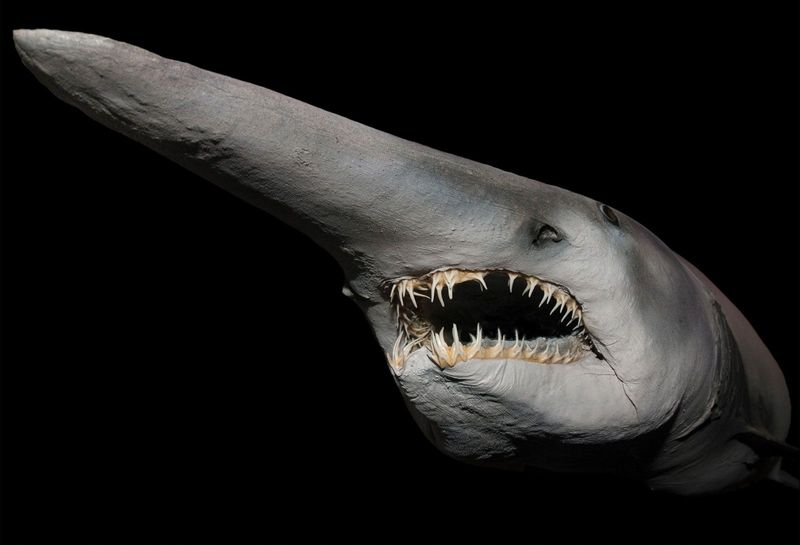
Emerging from the shadows of the deep, the goblin shark captures attention with its prehistoric appearance. Its elongated snout and protrusible jaws contribute to its eerie look, evoking images of ancient sea monsters. This living fossil glides slowly through the depths, relying on its electro-sensitive organs to detect prey. The goblin shark’s existence highlights the ocean’s role as a reservoir of Earth’s history, where ancient lineages continue to thrive. Its unique features and slow, deliberate movements offer a glimpse into the evolutionary pathways that have shaped life beneath the waves.
Anglerfish
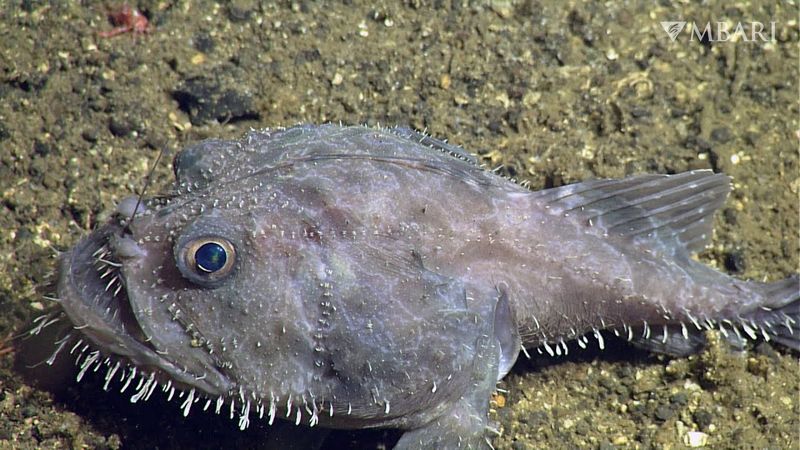
In the pitch-black depths, the anglerfish wields its luminous lure with unrivaled cunning. This appendage, glowing in the surrounding darkness, serves as a beacon to unsuspecting prey. Attracted by the light, they venture closer, unaware of the gaping maw that awaits. The anglerfish’s predatory strategies reveal the complexities of life in the deep sea, where survival demands both patience and ingenuity. Its grotesque appearance and fascinating hunting techniques make it a symbol of the ocean’s mysterious allure. In these shadowy realms, the anglerfish thrives, embodying the spirit of deep-sea adventure.
Colossal Squid
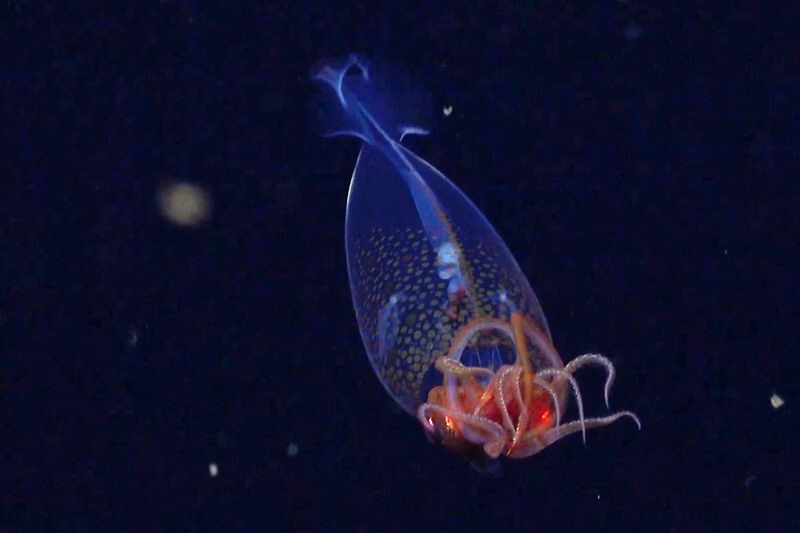
In the ocean’s unexplored depths, the colossal squid commands awe with its sheer size and enigmatic nature. Its eyes, the largest in the animal kingdom, peer into the darkness, helping it locate prey. This elusive giant, with tentacles lined with sharp hooks, is a formidable predator. Scientists marvel at its adaptations to the extreme pressures and frigid temperatures of the deep. The colossal squid, rarely seen by human eyes, serves as a reminder of the ocean’s mysteries and the vast expanse of uncharted waters teeming with life yet to be discovered.

